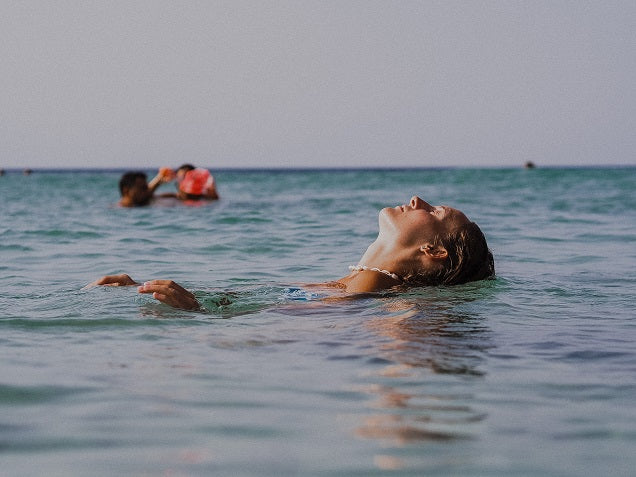
Swimming is a fantastic form of exercise that almost anybody can do. It is low impact, making it gentle on your bones and joints, while also providing a full-body workout that targets all the major muscle groups. Swimming boosts cardiovascular fitness, improves stamina, and can even have benefits for your mental health.
But if you’re bored of swimming laps at the pool, have you considered wild swimming? Wild swimming simply refers to swimming in natural bodies of water such as rivers, lakes, and the ocean. It can be tremendously fun and rewarding, allowing you to enjoy getting out in nature while you get your workout in.
But if you’re new to wild swimming, there are a few things to be aware of. Here are some of our top tips to get started successfully and safely.
Where can I wild swim?

There are thousands of locations across the United States and the world where you can wild swim. Locations near to the ocean have the most options, with Hawaii, California, and Florida having some of the best ocean swimming spots, but you can find places to swim outdoors in almost any region.
Start by performing a Google search for “wild swimming spots + [your city or state]”. This will turn up a few options for you to start with. You can also check to see if there is a wild swimming club or group in your area. If so, joining can be a great way to find the best swimming spots while also making some friends.
If you visit a body of water and see “no swimming” signs, obey them. They are there to keep you safe and it is not always easy to identify unsafe waters at a glance.
How to wild swim safely
Wild swimming can be exhilarating and fun. It can also be dangerous. Fortunately, it’s easy to mitigate many of the risks with a few basic safety precautions. Here are some to be aware of as you’re getting started.
Don’t go alone

You should only consider wild swimming alone if you are both a very strong swimmer and know the particular body of water extremely well. It’s always safest to go with someone else. Take a friend, join a wild swimming group, or rope your partner or a family member into going with you.
Check the water quality
Swimming in dirty water can make you sick. If possible, research the location before you go swimming to find out how clean the water is. Visually, you can check for telltale signs of dirty water such as blue or green algae, scum, or even trash in the water. In general, bodies of water near to cities and urban areas tend to be dirtier.
Use appropriate gear

Unless you’re swimming in a very hot location where the water has been warmed by the sun, consider using a wetsuit instead of a traditional swimming costume. This helps to keep you warm. Swim shoes can protect your feet from sharp rocks and stones. A brightly-colored suit or swim cap is also a good idea as this helps to make you visible to other water users.
Limit your time in the water
Even if you can swim for an hour in the pool, don’t plan to do the same outdoors. Cold water can be tough on your body. Therefore, limit your time in the water, especially the first few times you wild swim. A useful tip if you use a smartwatch (such as an Apple Watch or Fitbit) is to set a timer for 10-15 minutes and get out of the water when it goes off.
However, your recovery shouldn't be overlooked after a swim. That's where Incrediwear's wearable anti-inflammatory therapy comes into play. Enhancing the recovery process, these innovative products help you bounce back faster and prepare for your next wild swim.
Our body sleeve, designed for your comfort, enables you to manage discomfort, accelerate recovery, and reduce inflammation and swelling. With its flexibility and breathability, this sleeve can be effortlessly adjusted to your desired location, delivering targeted support where you need it most.
Don’t go too far out
When you’re a new wild swimmer or learning a new body of water, stay close to the shore at first. Going further out increases your risk of running into danger and also makes it harder to get out quickly if you do encounter a problem.
Avoid fast-moving water
Swimming against a strong current is almost impossible, even for very strong swimmers. Fast-moving water is extremely dangerous and you can lose control of your situation very quickly. Still or gently moving water is much safer.
Warm up afterwards
Cold water can continue to have an effect on the body long after your swim if you don’t take proper steps to warm up. Dry off with a towel, and then put on a cozy robe or a warm sweater. It can also be a good idea to have a hot drink (a flask of coffee is ideal) and a sugary snack after your swim.
Know your own abilities
Develop a good understanding of your own swimming ability and don’t try to swim above your level. You don’t need to keep up with anyone else and trying to do so can put you at risk.
Stay safe, and happy swimming!
Read more

As gyms and sports facilities closed across America and the world due to the Covid-19 pandemic, more people began working out at home than ever before in early 2020. And though many facilities hav...

As of late 2021, 19% of Americans were using some kind of wearable fitness tracker such as a Fitbit, Apple Watch, or similar device. These trackers offer varying levels of sophistication and can tr...






Leave a comment
All comments are moderated before being published.
This site is protected by hCaptcha and the hCaptcha Privacy Policy and Terms of Service apply.